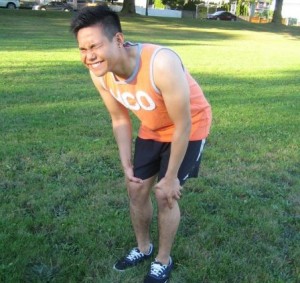Nocturnal leg cramps is described as a common condition of the lower extremity that is characterized by painful, involuntary muscle spasms of the legs that last from seconds to minutes. The muscle spasms may occur nightly or a few times a week. In majority of the cases, the affect muscles are the gastrocnemius or the calf muscles, however, it may occur anywhere in the legs, including the feet. The pain is sometimes excruciating that it can disrupt sleep. It is equally prevalent in both men and women, commonly beyond the age 50.Nocturnal leg cramps are not generally serious and cause very minimal complications, if any.
Causes of Nocturnal Leg Cramps
Most cases of nocturnal leg cramps are idiopathic. The following are associated with causing nocturnal leg cramps:
- Over-exertion of muscles
- Sitting for prolonged periods of time
- Improper sitting
- Standing on hard surfaces for prolonged periods of time
- Other conditions:
- Dehydration
- Diarrhoea
- Electrolyte imbalance
- Pregnancy
- Alcoholism
- Flat feet
- Medical conditions:
- Parkinson’s disease
- Neuromuscular disorders
- Endocrine disorders
- Certain medications:
- Diuretics
- Beta agonists
- Statins
- Oral contraceptives
When to See a Doctor Regarding Nocturnal Leg Cramps
Nocturnal leg cramps don’t generally last for a long period of time but the pain can be excruciating. If one is unsure whether to seek medical help regarding nocturnal leg cramps, the following tips may be helpful:
- When to visit the doctor immediately
- Intense and insistent cramping
- Night cramps after exposure to a toxin
- When to schedule a visit to the doctor
- Cramps interrupt sleep often causing trouble functioning during the day
- Cramping progresses to muscle weakness and atrophy.
First Aid Management for Nocturnal Leg Cramps

Nocturnal leg cramps are usually managed the same way as muscle cramps. Medical treatment might not be necessary as the cramps do not last long. To help ease the pain from nocturnal leg cramps, first aid should be administered.
- Forcefully stretch the affected foot up toward the head. Muscle cramps may also be relieved by walking around and massaging the leg.
- If the affected muscle is the calf, attempt to stand and put the weight on the affected leg while slightly bending the knee.
- Apply ice to the affected muscle. Do not apply ice directly to the skin as it may cause further damage.
- Take warm showers or baths.
Prevention of Nocturnal Leg Cramps
The following hints cannot give complete assurance of never having nocturnal leg cramps, however, they may help reduce chances.
- To avoid dehydration, drink plenty of fluids. Avoid drinking diuretics.
- Before going to bed, stretch the leg muscles. Do light exercises, if possible.
- Loosen the bed sheets and other covers at the foot of the bed.
Disclaimer: This article does not provide medical advice or treatment. This information given should not be used for self-diagnosis of the possible conditions. Seek medical attention when necessary. To learn more about how to manage nocturnal leg cramps and other muscle pains, enrol in First Aid Courses with St Mark James training.
